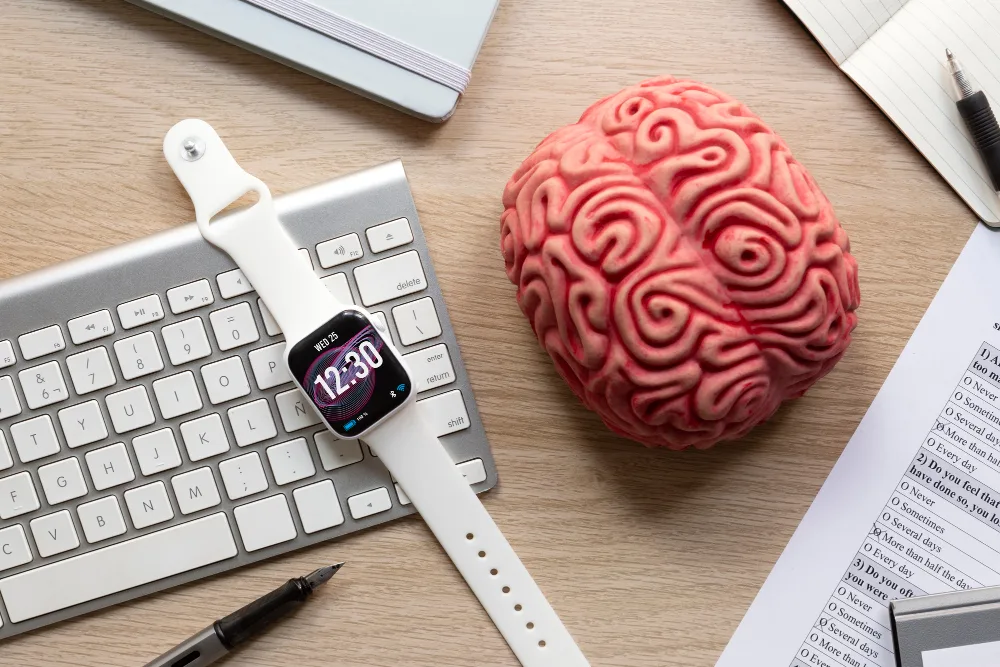In a world where strength is often equated with stoicism, many men find themselves trapped in a silent struggle with mental health challenges. I’ve seen firsthand how the pressure to “man up” can prevent guys from seeking the help they need. The statistics speak volumes—men are nearly four times more likely to die by suicide than women, yet they’re significantly less likely to seek mental health support.
Today, we’re breaking down the barriers that keep men from prioritizing their mental wellbeing. Whether you’re personally struggling or looking to support someone who is, this guide will walk you through practical steps, professional resources, and real solutions for men’s mental health care.
Common Mental Health Issues Affecting Men
Men experience many of the same mental health conditions as women, but often express symptoms differently or struggle in silence due to societal expectations. Some of the most common issues include:
- Depression – Often manifesting as irritability, anger, or increased risk-taking rather than sadness
- Anxiety – May appear as restlessness, agitation, or physical complaints
- Substance Use Disorders – Men are more likely to use alcohol or drugs to self-medicate
- PTSD – Particularly common among veterans and first responders
- Bipolar Disorder – Can be misdiagnosed due to different symptom presentation
- Work-related Stress – Often tied to provider roles and career pressure
Dr. Michael Freeman, psychiatrist specializing in men’s mental health, notes:
“Men typically don’t present with the classic symptoms we associate with depression. Instead of tearfulness, they might show increased aggression, workaholic tendencies, or risk-taking behaviors.”

The Hidden Signs of Depression in Men
Depression doesn’t always look like sadness. For many men, it manifests in ways that are easily missed or misinterpreted:
| Traditional Depression Symptoms | How Depression Often Appears in Men |
|---|---|
| Persistent sadness | Irritability and anger outbursts |
| Crying | Emotional numbness |
| Expressing feelings of worthlessness | Increased risk-taking behavior |
| Social withdrawal | Overworking or obsession with success |
| Loss of interest in activities | Increased alcohol or substance use |
| Expressing suicidal thoughts | Engaging in dangerous activities |
If you’ve been experiencing these alternative symptoms, especially for more than two weeks, it might be worth speaking with a mental health professional.
Breaking the Stigma: Why Men Don’t Seek Help
The numbers are alarming—men make up only about 40% of therapy clients despite experiencing significant mental health challenges. So what’s holding guys back?
I recently listened to an insightful discussion on this topic from Dr. Jordan Peterson’s podcast episode “Men and Mental Health: Breaking the Silence” (YouTube link). In it, he explores the cultural programming that begins in childhood with messages like “big boys don’t cry” and evolves into adult beliefs that seeking help is somehow a weakness.
Some of the major barriers include:
- Fear of appearing weak – Many men worry that admitting to mental health struggles will make them seem less capable or masculine
- Self-reliance as virtue – The belief that “real men” should solve their own problems
- Lack of emotional vocabulary – Many men haven’t been taught to identify or express complex emotions
- Career concerns – Worries about how seeking treatment might affect job prospects or leadership roles
- Normalized suffering – The belief that stress, anxiety, and unhappiness are just “part of being a man”
James, a 37-year-old construction manager, shared with me: “I spent three years battling what I now know was depression. I just thought I was being lazy or weak. The idea of seeing a therapist felt more terrifying than the pain I was in—what would my crew think? What would my dad say?”
Addressing the Stigma
Breaking down these barriers starts with:
- Normalizing conversations about mental health between men
- Reframing help-seeking as a sign of strength and self-awareness
- Creating male-friendly mental health spaces that feel comfortable and relevant
- Highlighting male role models who openly discuss their mental health journeys

10 Effective Ways Men Can Prioritize Mental Health
Taking charge of your mental wellbeing doesn’t have to mean immediately jumping into therapy (though that’s a great option). Here are practical approaches that have proven effective specifically for men:
- Start with physical activity – Exercise releases endorphins and can significantly reduce symptoms of depression and anxiety. Even a 20-minute daily walk makes a difference.
- Find purpose-driven social connection – Men often connect better through shared activities rather than face-to-face conversation. Join a sports league, volunteer group, or hobby club.
- Develop emotional literacy – Practice naming your feelings beyond just “fine” or “stressed.” Apps like MoodMission can help track and identify emotional patterns.
- Create a mental health toolkit – Identify 3-5 strategies that help you reset when things get overwhelming, whether it’s running, woodworking, or strategic video gaming.
- Explore therapy options that feel comfortable – Consider starting with online therapy, group sessions, or even walking therapy sessions that feel less intense than traditional face-to-face counseling.
- Establish a sleep routine – Poor sleep dramatically impacts mental health. Set consistent sleep and wake times and create a wind-down ritual.
- Audit your media consumption – Notice how different news sources, social media platforms, or entertainment affect your mood and mental state.
- Practice stress management techniques – Simple breathing exercises, meditation apps designed for beginners, or guided relaxation can make a significant difference.
- Connect with male-focused support communities – Groups like Men’s Shed or online forums provide spaces where men can share experiences without judgment.
- Consider speaking with your doctor – Primary care physicians can be a less intimidating first step toward getting help, and they can rule out physical causes for symptoms like fatigue or concentration issues.

Practical Self-Care for Men: Beyond Bubble Baths
Self-care isn’t just about spa days. For many men, effective self-care looks different:
| Traditional Self-Care | Male-Friendly Alternatives |
|---|---|
| Bubble baths | Intentional workout recovery |
| Facials | Strategic sleep improvements |
| Journaling feelings | Problem-solving journaling |
| Talk therapy | Skills-based counseling |
| Meditation | Breathwork during physical activity |
The key is finding what genuinely helps you recharge and feel better—whatever that looks like for you.
Supporting the Men in Your Life
If you’re concerned about a man in your life—whether it’s your father, brother, partner, son, or friend—how you approach the subject matters. Here’s how to effectively support someone who may be struggling:
DO:
- Meet them where they are – Suggest talking while doing an activity side-by-side rather than face-to-face
- Use non-threatening language – Frame conversations around specific behaviors rather than emotions (“You haven’t been sleeping much lately” vs. “You seem depressed”)
- Normalize the experience – Share relevant stories of other men who’ve faced similar challenges
- Offer practical support – Research therapists, drive them to appointments, or help with responsibilities while they focus on recovery
- Be patient – Understand that opening up may be genuinely difficult, not just stubbornness
DON’T:
- Push for immediate emotional disclosure
- Minimize their concerns with phrases like “just cheer up”
- Make comparisons to others who “have it worse”
- Express shock or judgment when they do open up
- Try to fix everything yourself
Mark, whose brother struggled with severe anxiety, shared: “The turning point wasn’t when I tried to get him to talk about his feelings. It was when I asked if he wanted to go for a drive, and we ended up talking naturally. Then I could say, ‘You know, my buddy saw someone for something similar and it really helped.'”
Professional Resources and Treatment Options
When self-help strategies aren’t enough, professional support can make all the difference. Here are treatment approaches that many men find particularly effective:
- Cognitive Behavioral Therapy (CBT) – A practical, results-oriented approach that focuses on changing thought patterns and behaviors rather than diving deep into childhood issues.
- Solution-Focused Brief Therapy – Emphasizes solutions rather than problems and tends to require fewer sessions.
- Group Therapy – Can reduce feelings of isolation and provide peer support from others facing similar challenges.
- Medication – For some conditions, medication can be life-changing, either as a short-term intervention or longer-term management strategy.
- Men’s Specific Programs – Some treatment centers and therapists specialize in men’s mental health issues.
Finding the Right Therapist
Not every therapist is the right fit for every person. Look for someone who:
- Has experience with men’s mental health issues
- Makes you feel comfortable and respected
- Explains their process clearly
- Focuses on practical skills and improvements
- Respects your pace and boundaries

Making Therapy Work for You
If traditional therapy hasn’t worked in the past, consider:
- Teletherapy options that fit your schedule
- Alternative formats like text-based therapy
- Specialized approaches like EMDR for trauma or DBT for emotional regulation
- Male therapists if you feel more comfortable with same-gender support
- Faith-based counseling if spirituality is important to you
Workplace Mental Health for Men
Given that many men spend a significant portion of their lives at work, workplace mental health is crucial. Here’s how employers can better support men’s mental wellbeing:
- Create a culture where it’s OK not to be OK – Leaders who occasionally share their own challenges normalize mental health conversations.
- Offer flexible EAP options – Ensure men can access support discreetly and in various formats.
- Train managers to recognize warning signs – Changes in performance, increased irritability, or social withdrawal may indicate struggles.
- Implement stress management programs – Provide tools and techniques specifically designed for high-pressure work environments.
- Address workaholic culture – Explicitly value work-life balance and discourage always-on mentalities.
- Provide mental health days – No questions asked time off for mental wellbeing.
For Employees:
If you’re struggling with workplace stress:
- Set boundaries around work hours and email checking
- Use available resources like EAP counseling
- Build supportive peer relationships
- Practice stress management techniques during breaks
- Consider discussing accommodations if needed

The Role of Masculinity in Mental Health
Traditional masculine ideals can both help and hinder mental health. The key is identifying which aspects serve you and which might be holding you back.
When Traditional Masculinity Helps:
- Resilience and determination to overcome challenges
- Problem-solving orientation that seeks solutions
- Protective instincts that can extend to self-protection
- Physical strength activities that improve mental health
- Provider identity that gives purpose and meaning
When It Hinders:
- Emotional suppression that prevents processing feelings
- Resistance to help-seeking when support is needed
- Identity tied solely to achievement rather than wellbeing
- Isolation from support networks
- Unhealthy coping mechanisms like substance use or aggression
Dr. Thomas Joiner, author of “Lonely at the Top,” notes: “The very traits that help men succeed—independence, self-reliance, competition—can become destructive when they prevent connection and vulnerability.”
Redefining Strength
True strength includes:
- Knowing when to ask for help
- Processing emotions rather than suppressing them
- Building genuine connections with others
- Taking care of your whole self—physical and mental
- Setting healthy boundaries

Crisis Resources and Immediate Help
If you or someone you know is in immediate distress, don’t wait. Help is available 24/7:
- 988 Suicide & Crisis Lifeline: Call or text 988
- Crisis Text Line: Text HOME to 741741
- Veterans Crisis Line: Call 1-800-273-8255 and Press 1
Remember: Reaching out when you’re in crisis isn’t weakness—it’s the ultimate act of self-preservation and strength.
Warning Signs That Require Immediate Attention:
- Talking about wanting to die or kill oneself
- Looking for ways to kill oneself
- Talking about feeling hopeless or having no purpose
- Talking about feeling trapped or in unbearable pain
- Increasing alcohol or drug use
- Acting anxious, agitated, or recklessly
- Withdrawing or feeling isolated
- Showing rage or talking about seeking revenge
- Displaying extreme mood swings
Conclusion: A New Era of Men’s Mental Health
We’re at a turning point in how society views men’s mental health. More athletes, celebrities, and everyday men are speaking openly about their struggles and triumphs, creating space for others to do the same.
Taking care of your mental health isn’t about being less of a man—it’s about being the best version of yourself: present, balanced, and able to fully engage in the things that matter most to you.
Whether you start with a small step like a mental health app or a bigger one like calling a therapist, what matters is that you begin. Your future self will thank you.
A Call to Action: This week, choose one item from our list of 10 ways to prioritize mental health and commit to it. Then share what you’ve learned with one other man in your life. Together, we can change the conversation around men’s mental health, one honest conversation at a time.




